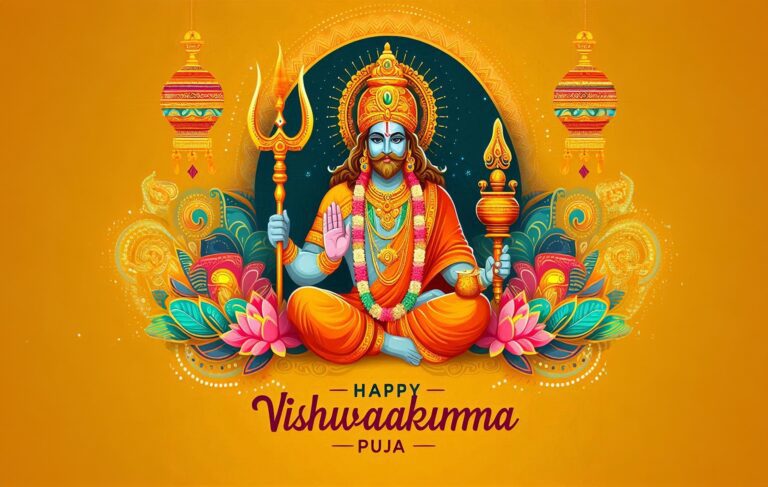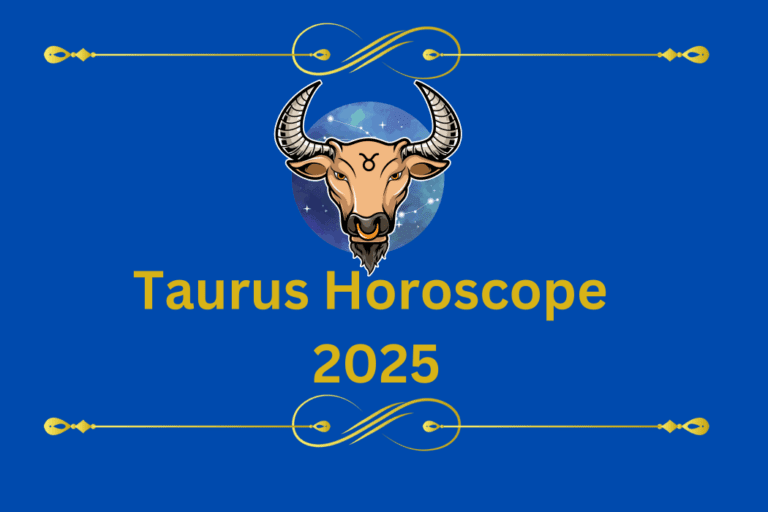Govardhan Puja 2023: Legend, Tithi, Muhurat, and Significance
"Exploring the Traditions and Significance of Govardhan Puja: A Timeless Festival of Devotion and Gratitude"
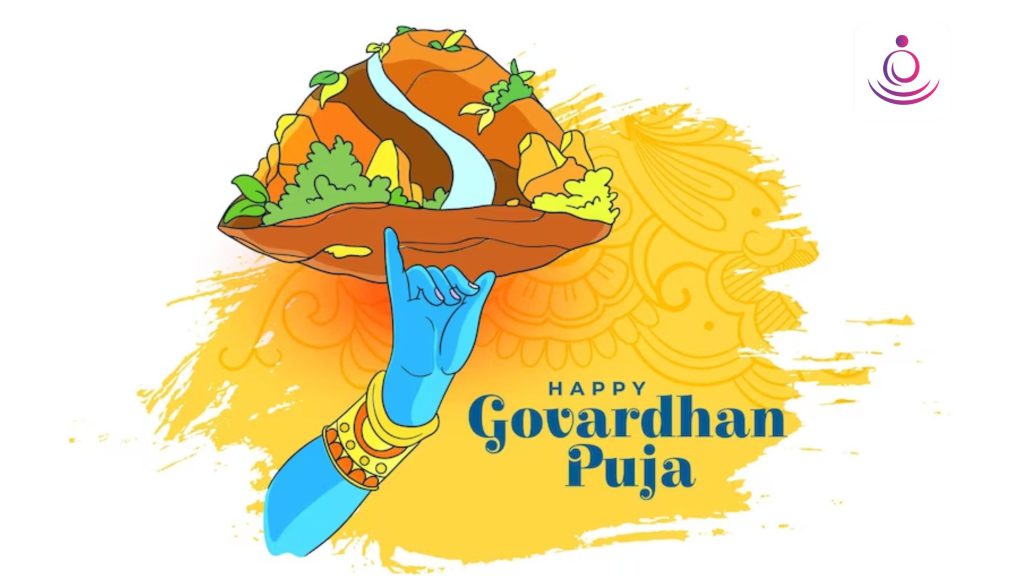
Govardhan Puja 2023: Govardhan Puja, also known as Annakut or Bali Pratipada, is a significant Hindu festival celebrated with great enthusiasm and devotion. It falls on the first day of the Kartik month in the Hindu calendar, the day after Diwali. This festival holds a special place in the hearts of devotees, as it symbolises the bond between nature, the divine, and the spirit of gratitude.
The Legend:
The origin of Govardhan Puja is rooted in the revered Hindu scripture, the Bhagavad Gita. It narrates the story of Lord Krishna’s divine act of protecting the people of Gokul from the wrath of Lord Indra, the god of rain and thunderstorms. When Lord Indra sent torrential rains to punish the people for neglecting his offerings, Lord Krishna lifted the massive Govardhan Hill on his little finger, providing shelter to the villagers. This act indicated the protective role of nature and that the divine is more important than rituals and sacrifices. Further, this entire incident made Govardhan a blessed hill, and hence, it is believed that one who circumambulates it, will be sanctified from all sins.
Therefore, devotees from all over the world visit the Govardhan Hill to perform the puja every year, reinforcing their faith in Lord Krishna.
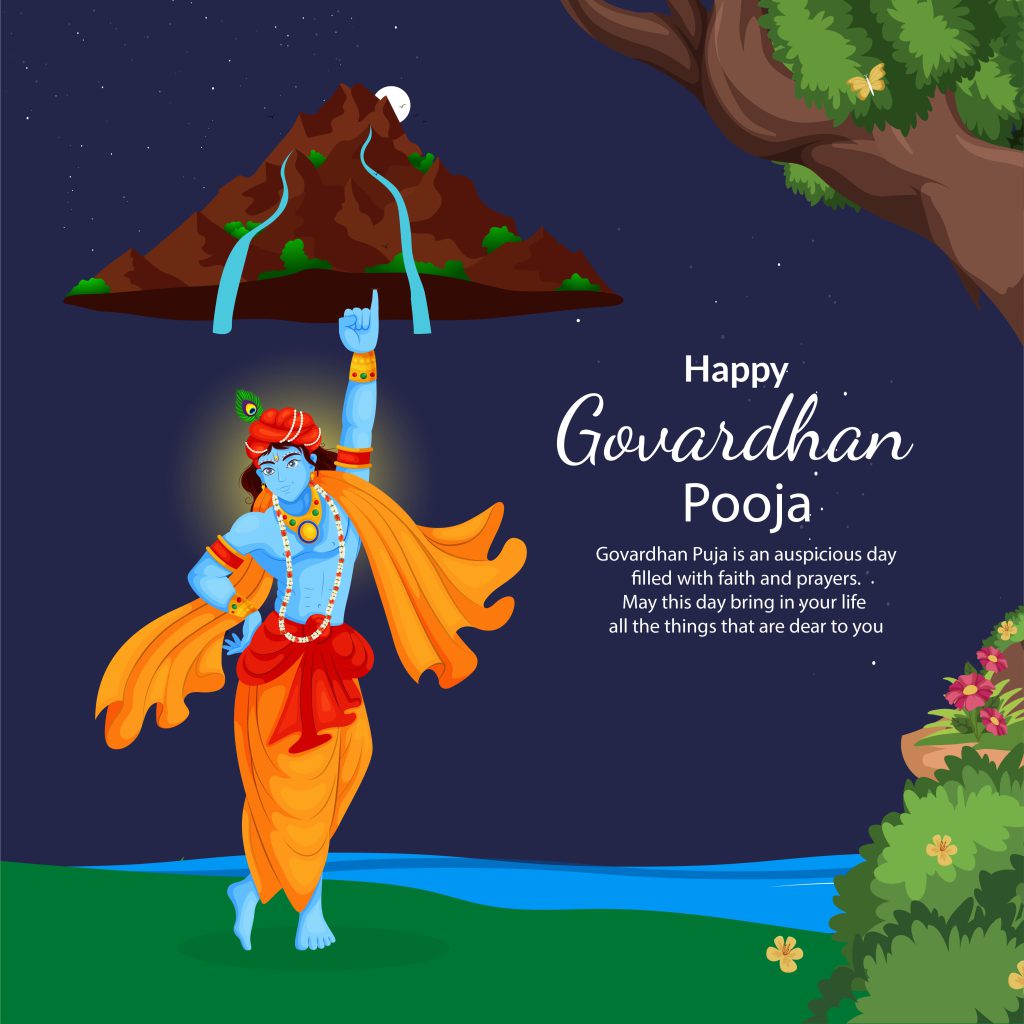
As a result, today, Gobardhan or Govardhan Hill is considered as a significant place of pilgrimage in Hinduism.
But did you know that the name “Gobardhan” is composed of Sanskrit words where “Go” means “cattle” or “cow,” and “Bardhan” implies “nurse” or “provider” ? Hence,, the name Gobardhan is often understood as “the nurturer or protector of cattle,” highlighting the religious and cultural significance of cows in Hinduism.
Significance of Govardhan Hill Parikrama on Govardhan Puja:
Situated on the outskirts of Mathura, Govardhan or Giriraj ji is a hallowed location, considered as the natural embodiment of Lord Krishna. The act of Lord Krishna lifting the massive hill on his little finger, made Govardhan a blessed hill. Today, it is believed that completing a parikrama around Govardhan Hill fulfils one’s wishes and desires, and releases them of all sins.

Everyday, devotees express their reverence to Lord Krishna by circumambulating the hill, a practice known as parikrama, and is particularly observed during the Govardhan Puja or Annakut festival at Giriraj Temple. This parikrama takes three different forms: barefoot parikrama, doodh (milk) parikrama involving carrying a pot of milk with a small hole, and Dandavat parikrama, which entails multiple sashtang dandavats where one lies prostrate on the ground in reverence to the deity.
Rituals and Traditions:
- Preparation of Annakut: Devotees prepare a grand feast of various vegetarian dishes and sweets, collectively known as “Annakut” or “mountain of food.” These offerings are arranged in a circular shape to represent the Govardhan Hill.
- Worship of Govardhan Hill: Since not everyone can visit the site, devotees often worship an idol or image of Govardhan Hill, usually made of cow dung or clay. Devotees offer flowers, incense, and lamps, expressing their gratitude to nature and Lord Krishna.
- Devotional Songs and Kathas: Singing bhajans and narrating stories of Lord Krishna’s divine miracles are an essential part of the celebration.
- Community Participation: Govardhan Puja is often celebrated with friends and family. Devotees visit temples, join processions, and share the Annakut feast with their communities.
Govardhan Puja 2023 Date and Timings
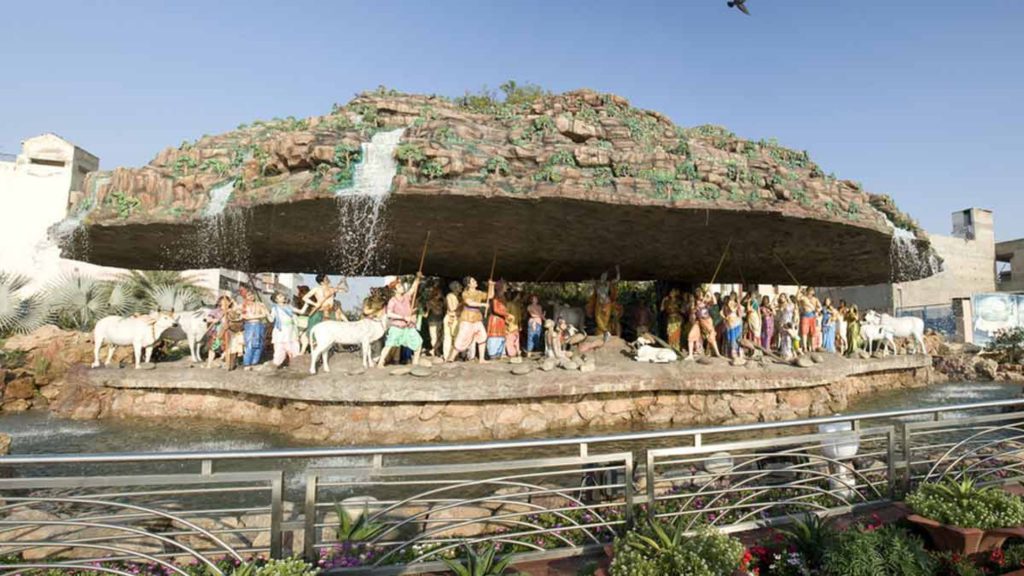
Here are the details for Govardhan Puja Date and Shubh Muhurat:
- Govardhan Puja 2023 Date: Tuesday, November 14, 2023
- Morning Puja Muhurat: 06:43 AM to 08:52 AM
- Pratipada Tithi Begins: 02:56 PM on Nov 13, 2023
- Pratipada Tithi Ends: 02:36 PM on Nov 14, 2023
Puja Vidhi:
1. Materials Needed - A picture or idol of Lord Krishna.
- A small mound of cow dung or clay to represent Govardhan Hill (you can also make it with cow dung or clay).
- A variety of food items and sweets, often arranged in the shape of a hill (Annakut).
- Ghee lamps or diyas.
- Incense sticks.
- Camphor.
- Flowers.
- Water.
- Fruits and betel leaves with areca nuts.
2. Govardhan Puja Vidhi
- Preparation: Cleanse your home and the area where you will perform the puja. Set up a clean, elevated platform or table for the deity and arrange the food items in the shape of a hill.
- Idol/Photo Placement: Place the picture or idol of Lord Krishna on the elevated platform. Place the mound of cow dung or clay representing Govardhan Hill in front of the deity.
- Light the Lamps: Light the ghee lamps or diyas in front of the deity. Also, light incense sticks to create a sacred atmosphere.
- Offerings: Offer various food items, sweets, fruits, and betel leaves with areca nuts to Lord Krishna. You can also offer milk, curd, and butter, as Lord Krishna was fond of dairy products. The food items should be placed in front of the mound of cow dung or clay.
- Puja: Begin the puja by chanting mantras dedicated to Lord Krishna or Govardhan Hill. You can recite the Govardhan Puja Katha (story) as well.
- Aarti: Perform aarti (a ritual of waving a lit lamp in front of the deity) while singing devotional songs and bhajans.
- Prayers: Offer your prayers and seek the blessings of Lord Krishna for the well-being and prosperity of your family and loved ones.
- Camphor Aarti: Light camphor and offer it to the deity while ringing a bell.
- Distribute Prasad: After completing the puja, distribute the prasad (blessed food items) among family members and devotees.
- Feeding Cows: As cows are considered sacred in Hinduism, feeding cows and offering them food is a common practice on Govardhan Puja.
Final Thoughts:
Govardhan Puja is a beautiful reminder of the interconnectedness of nature, humanity, and spirituality. It teaches us to be grateful for the bounties of nature and to show devotion through acts of kindness and protection. It is a time to reflect on the importance of nature, agriculture, and the significance of preserving the environment.This festival fosters a sense of unity and strengthens the bond of love and trust among family and community members.
In essence, it’s a day to reflect on the importance of humility, faith, and gratitude, echoing the timeless teachings of Lord Krishna.

FAQs:
- What is Govardhan Puja?
- Govardhan Puja is a Hindu festival celebrated to honour and worship Lord Krishna. It’s observed on the fourth day of the 5-Day Diwali celebrations, also known as Annakut Puja.
- Why is Govardhan Puja celebrated?
- Govardhan Puja commemorates the legend of Lord Krishna lifting the Govardhan Hill to protect the villagers from torrential rain sent by Lord Indra. It symbolises the importance of nature and the environment.
- When is Govardhan Puja celebrated?
- Govardhan Puja falls on the first day of the Hindu month of Kartik, which usually corresponds to October or November in the Gregorian calendar.
- How is Govardhan Puja performed?
- Devotees build a symbolic representation of the Govardhan Hill from cow dung and worship it. They prepare a variety of vegetarian dishes and offer them to Lord Krishna in a display known as “Annakut” (a mountain of food).
- What are some traditional rituals during Govardhan Puja?
- Lighting lamps, singing devotional songs, and offering prayers are common rituals. Devotees also circumambulate the Govardhan Hill made of cow dung and then distribute the Prasad (blessed food) among the community.
- Is Govardhan Puja a regional festival?
- While it’s celebrated across India, it is more prominently observed in the northern states, particularly in Uttar Pradesh, Rajasthan, and Haryana.


